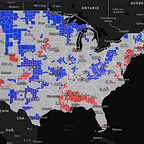The Education Divide: The Pandemic’s Impact on K-12 Learning Outcomes
By Laura Chen
In the last year, the COVID-19 pandemic has dramatically altered the way students in grades Kindergarten through 12th grade experience education. It has both revealed and exacerbated the inequities that certain students already face in the public education system. For low-income students of color, access to adequate academic resources was already an issue pre-pandemic. In the past decade, multiple studies have shown that the average black or Hispanic student is roughly two years behind the average white one. Moreover, schools in low-income communities are poorly funded compared to schools in higher-income communities, where the majority of its residents are White. These disparities are rooted in class differences, racial inequities embedded in the education system, and overall achievement and opportunity gaps between communities of color and white communities.
The pandemic has made learning more difficult, especially for low-income students of color. Low-income students of color were and are less likely to access the necessary devices and internet access that are critical to learning online, according to the Pew Research Center. They report that “roughly one-third (35%) of households with children ages 6 to 17 and an annual income below $30,000 a year do not have a high-speed internet connection at home, compared with just 6% of such households earning $75,000 or more a year. These broadband gaps are particularly pronounced in black and Hispanic households with school-age children — especially those with low incomes.” This research also revealed that lower-income parents of K-12 students are more likely to say their children are getting online instruction only. The chart below illustrates this, with 53% of low-income families reporting online instruction only as opposed to 45% of middle income and 40% of upper-income families.
The McKinsey & Company Foundation released and assessed data from Fall 2020 that captured how students performed on tests during the pandemic. The chart below highlights the stark differences in test scores between students of color and their white peers. The researchers believe that “these scores suggest that students of color may have lost three to five months of learning in mathematics, while white students lost just one to three months”.
Researchers at UC Santa Cruz also led a study that reported teacher concerns during the Pandemic. The study found that “78 percent of teachers reported student engagement as a challenge in their classrooms during the fall of 2020, and 57 percent were concerned about unequal access to learning.” Student participation has especially decreased for students who come from lower-income households, those with special needs or are learning English, and more.
Moreover, the digital divide between rural and urban communities has made inequities on a spatial scale more apparent. Only 63 percent of rural adults say they have access to the internet at home, compared with 75 percent of urban adults. This data suggests that compared to students in urban areas, students in rural areas are more likely to lack the necessary technology to meet the needs of remote learning. Moreover, many rural areas already have high poverty and low graduation rates that are compounded by the marginalization of Black and Indigenous people and other people of color in rural communities over generations.
We can look further at the distribution of technology access across the United States by exploring technology usage as it applies to working Americans. Using mobility data from the Atlas site, we can see in which parts of the country people were more likely to work outside their homes. The graphic below depicts mobility data for individuals working full time outside of home on February 19, 2021.
Compared to the rest of the country, midwestern states like Minnesota, Wisconsin, Illinois, Kansas, the Dakotas, and Montana had high rates of individuals working outside home. These happen to also be majority rural counties like Ida in Iowa, Wabaunsee in Kansas, Antelope in Nebraska, and more. This data can help give us a snapshot of which areas can afford to have individuals work from home, and by extension which students can be educated remotely using the necessary technology.
Rural Iowa also recorded a great number of COVID-19 deaths compared to the rest of the country. The Quad-City Times reported that as of March 7, 2021, rural counties like Ida, Emmet, O’Brien, Ringgold, and Adair had COVID-19 death rates higher than 400 deaths per 100,000 people. The national average at the time was 155. This death rate is correlated to social determinants of health factors in relation to poverty, low-quality education, lack of hospital resources, and more.
With the rollout of vaccines, there is hope that the overall return to in-person learning can help tackle and reverse these statistics. However, more work needs to be done on the policy level in order to ensure this possibility. Even before the Covid-19 Pandemic, inequities in K-12 education have persisted for decades. Issues including improper funding, unequal test preparation, and lack of emotional and social resources continue to impact student performance and later life outcomes.
Explore more county and state COVID-19 data at uscovidatlas.org
